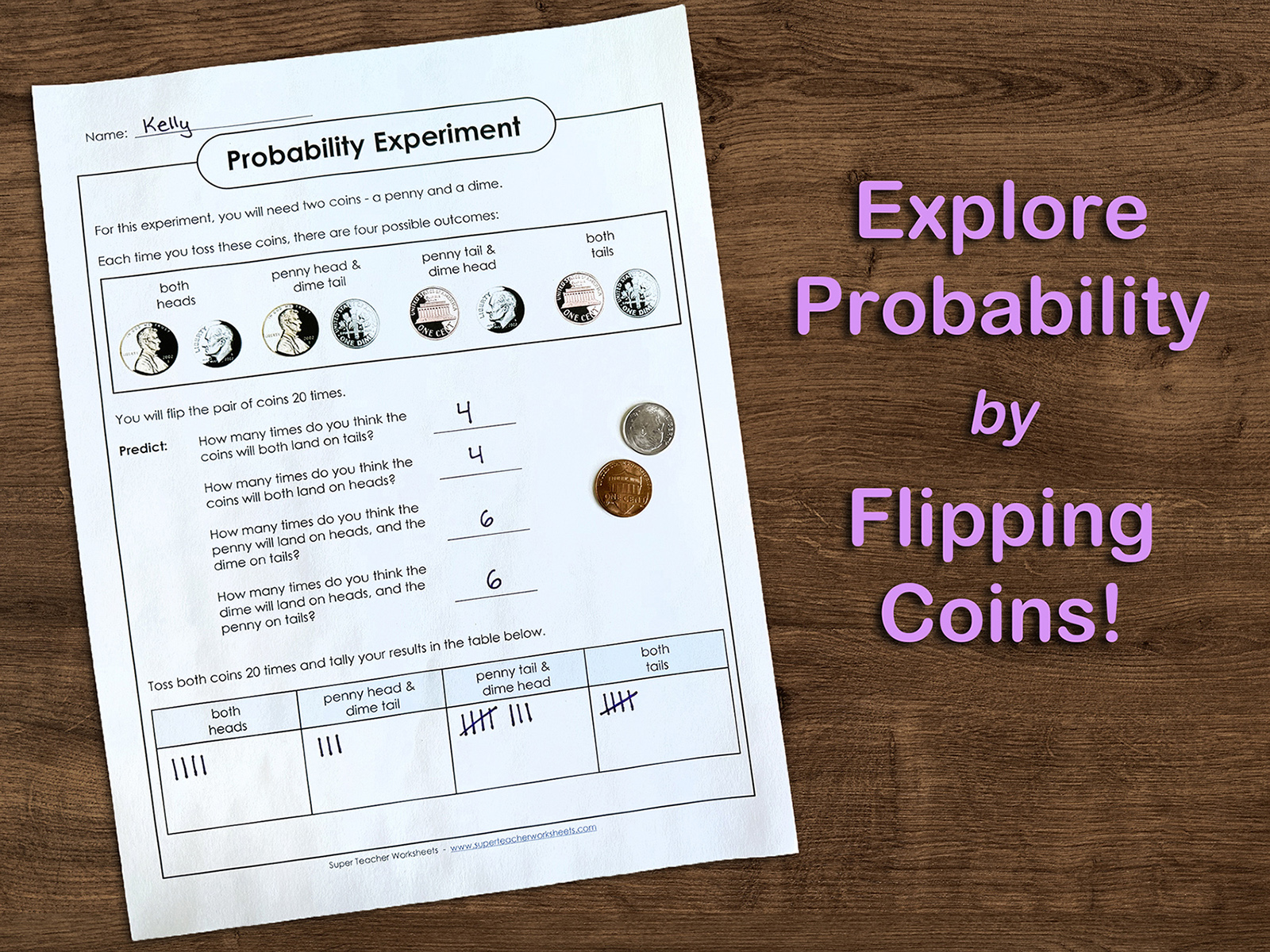
Here's a fun activity that'll have your students flipping out over the world of probability. The March blog will have kids doing their best referee impressions and flipping coins to see if they land heads or tails!
For this activity, we will be using the Super Teacher Worksheets probability worksheet. This worksheet provides a structured way for students to make predictions, record their coin flip results, and explore the probability of landing on heads or tails.
Pair up your students so everyone's got a partner. One student becomes the master flipper, while the other records the data. Partners will switch roles so that both students have an opportunity to practice their coin-flipping skills. (If you are working one-on-one with your learner, you get to be the partner!)
Here's how it works:
1. Distribute the probability worksheets to each pair of students, one worksheet per student.
2. Have each pair make predictions on their sheets.
3.The master flipper kicks things off by flipping both the penny and dime 20 times, and the recorder tallies every coin flip.
4. Switch roles and repeat the process using the second partner’s worksheet.
5. Teams can then compare their findings with other students, discuss any patterns or trends they observed, and reflect on the concept of probability.
Through this hands-on activity and the accompanying worksheet, students will not only practice their coin-flipping skills, but also develop a deeper understanding of probability concepts. They'll engage in mathematical reasoning, data analysis, and critical thinking as they explore the likelihood of different outcomes.
Sure, things might get a little goofy along the way—maybe the penny decides it's a heads-only kind of day, or the dime insists on tails for every flip. But hey, that's the beauty of probability—it's unpredictable, it's exciting, and it’s fun!
__________________________________________________________________________
After completing the activity and discussing their findings, you can extend students’ learning by encouraging them to reflect on real-world applications of probability. Prompt them to think about situations where understanding probability is important, such as weather forecasting, sports statistics, or even making decisions in everyday life. By connecting the concept of probability to practical scenarios, students will see its relevance beyond the classroom and gain a deeper appreciation for its significance. This class reflection reinforces the value of the activity and helps students make meaningful connections to the world around them.